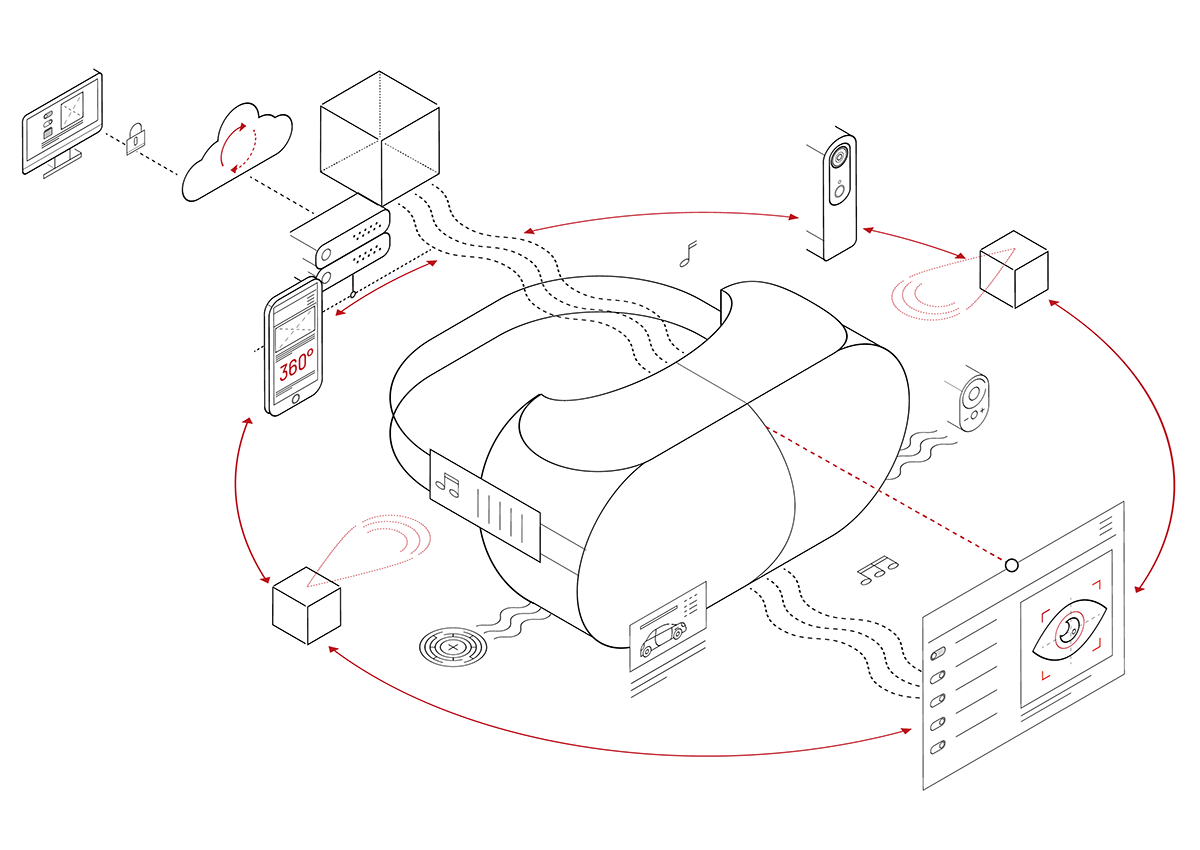A picture is worth a thousand words
Virtual reality (VR) refers to computer-generated and animated, realistic visual worlds that adapt to the viewer’s perspective in real time. Used in marketing, they make it possible to experience a product emotionally even before it rolls off the production line. VR models are particularly useful in the sale of cost-intensive, customizable products, for example in the automotive industry, which offers new car buyers an individual configuration. In principle, one and the same model can be ordered in several million variants. To create virtual reality, you not only need software that calculates three-dimensional images from any perspective in real time, but also playback hardware whose frame rate (frames per second, FPS) is high enough to create an impression of flowing movement. A frame rate that is too low can cause nausea in the viewer. Since the necessary technology is now market-ready and affordable, VR models are becoming increasingly important in both B2C and B2B marketing.
Resort to design data
Computer-aided design (CAD) provides manufacturers of technical goods such as carmakers with extensive 3D data. These can be prepared with moderate effort for the visual representation of a vehicle on the brand website, in the configurator or catalog, for example. To do this, the dimensions from the CAD systems must be assigned materials, among other things. In addition, the individual parts must be interconnected in such a way that the arrangement is correct from every angle. This work, which is by no means trivial, requires constant monitoring and adjustment, especially since even small, short-term changes to the data stock, for example on the occasion of the annual model update, can have a massive impact on the visualization.
Upgrade car dealerships
Virtual demonstration vehicles would benefit retailers in particular. The increasing variety and complexity of models sometimes overwhelms dealers. Whereas a manufacturer used to have five to ten models in its range, some now have over forty. How many car dealerships have the space to stock such a large number, each in several variants? Many of the new functions and extras also require explanation. Here, dealers expect manufacturers to provide attractive media to support the sales pitch. However, producing glossy brochures or catalogs is expensive and time-consuming. On top of that, they quickly become outdated. Quote from the field: “To explain modern technology, I need modern technology.” For example, a VR configurator that offers the following.
- Extensively configurable, real-time responsive VR or 3D models show customers an emotionally appealing preview of their dream car.
- In the VR environment or on the screen, the salesperson can respond in detail and vividly to the customer’s wishes. This increases the likelihood of a contract being signed.
- The customer no longer has to “blindly” trust the salesperson because he sees in advance what he is ordering.
The design of the VR environment and its presentation in the dealership is also important. If the customer buys a premium product, the showroom should already radiate value and modernity. A VR configurator fulfills this requirement. For customer-oriented development of the software, we recommend an agile methodology that allows rapid adaptation to modifications in the use case. In this way, feedback from retailers, for example, can be incorporated into the solution at short notice.
Internationalization
If international use of the software is planned, country versions must be programmed that reflect the respective legal requirements. Another challenging task is to roll out the configurator to the dealers and to organize support for both the hardware and the software in all countries of use. Numerous issues have to be clarified between the car manufacturer, VR providers and car dealerships, from the procurement of the hardware, including furniture, to user contracts and the establishment of the three support levels.
Are you interested in using virtual reality as a sales tool? Then contact us! We can advise you on the following aspects, among others:
- Preparation of 3D data for real-time visualization of a product
- Analysis of the advantages and disadvantages of individual VR software and hardware options
- Consulting for the selection
- Use of agile project methods for rational, customer-oriented software development
- Rollout concept nationally and internationally
- Integration of the VR solution into the retail infrastructure
- Alignment of the project with the digital strategy of your sales department
You will find extensive information in our Content Magazine Issue 2, which is in German.
